
Things we like
- Good internal occupant space
- Easy parking despite the size
- Smart spacing of transmission ratios
Not so much
- That engine noise
- Ride can feel finicky, especially at speed
- Cabin feels dated
Wheels Media’s production contributor Andy Hunt spends a few days with the Mitsubishi Pajero Sport to give us his Regular Everyday Bloke “I’m no journalist” take on the popular SUV.
The largest SUV in my garage is of the mid-sized variety – a Volkswagen Tiguan.
In my travels around the city, I’ve seen a number of Pajero Sport wagons on the road, and even in the VW SUV, I find myself looking in a slightly upwards direction at these things, grimacing at how they block my view of the road and surrounds. Often because they seem to always rock up next to me in a shopping centre car park…
Now came the opportunity to step up into a “real” SUV, but given that this GLS example is of the 4×2 variety (the same variant reviewed here), I did initially wonder about the kind of customer Mitsubishi was courting.
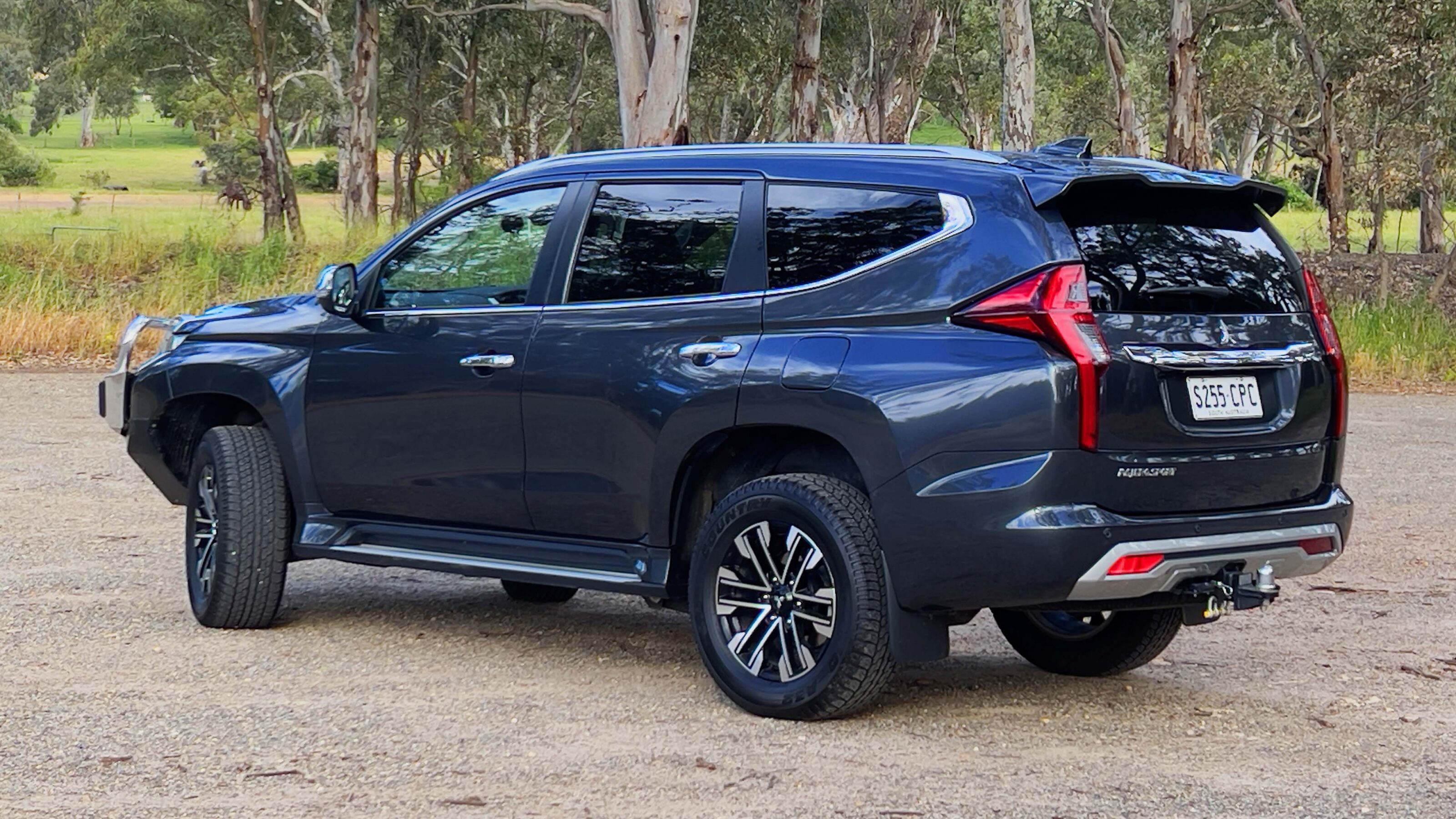
This is a car that clearly has a design brief for off-roading, with high ground clearance and good approach and departure angles, but has the two-wheel traction of a common family hauler.
Looking at the towbar kit on the back ($1386) and reading the tow rating of 3000kg (braked) with a tow ball weight of 300kg, I figured it was for the family who would be looking to drag caravans or boats with them on their travels, while mostly sticking to sealed roads.
I did initially think that the rear of the car had quite a long overhang and high elevation, although it doesn’t seem out of place in the segment to which this car is pitched.
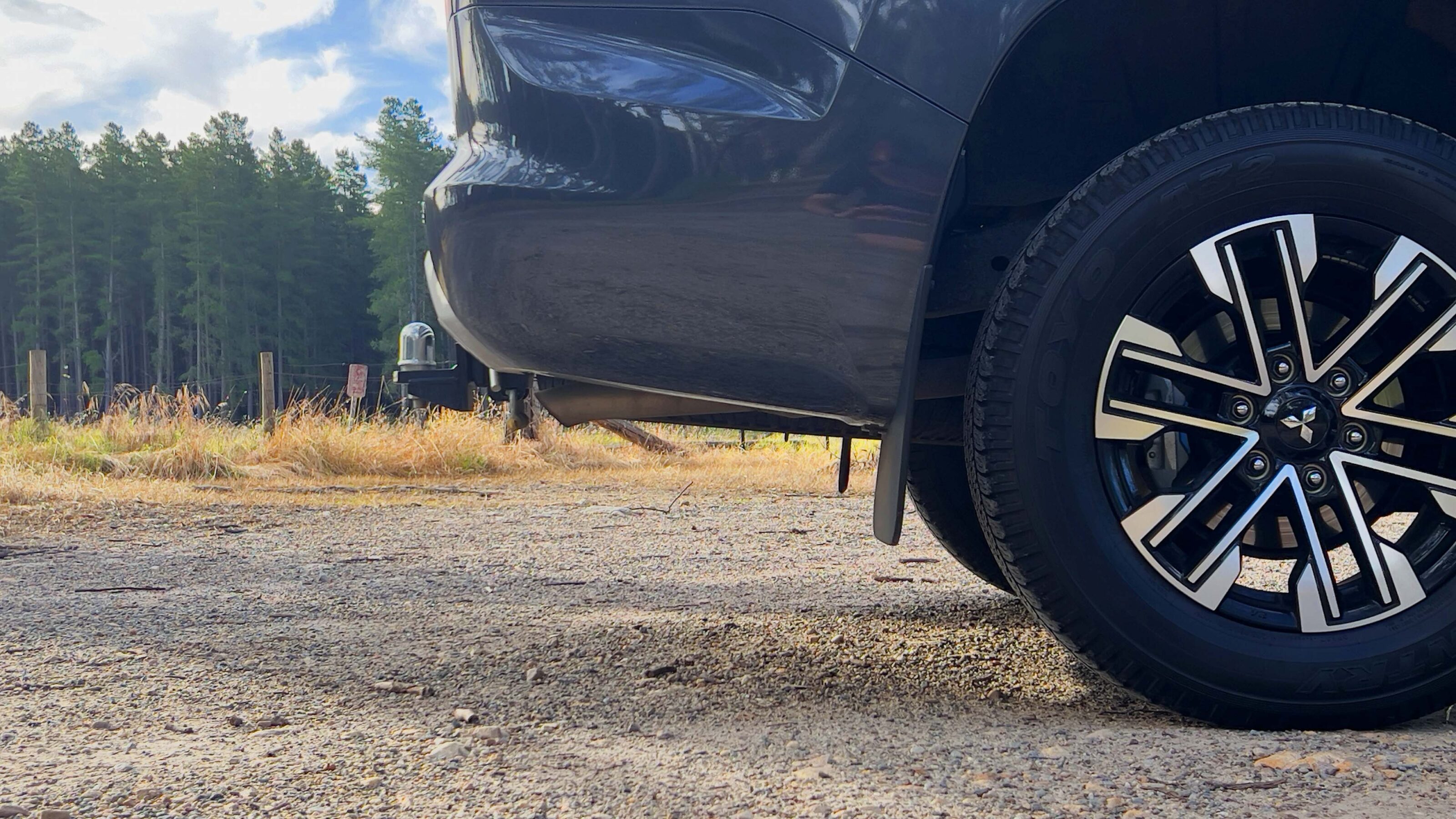
JUMP AHEAD
- First impressions
- Comfort
- Technology
- On the road
- Safety
- Fuel economy
- Parking
- Last impressions
- Specifications
First impressions
I was somewhat prepared for the size of the Pajero Sport before collection, and while I have driven other Cruisers of the Land in the past, I did find myself slightly confronted by the sheer mass of this seven-seat Pajero Sport GLS from Mitsubishi.
This probably wasn’t helped by the sight of the enormous alloy front protection bar (a $3879 accessory), which would probably come in handy as a steam train’s cow catcher.
Clambering up and into the car was an easy affair, and greeting me inside was a fairly rudimentary touchscreen of decent resolution, and a classically arranged instrument cluster of two analogue dials and a small colour screen between them for information. So far, so familiar. Poking at the start button wakes the 2.4-litre diesel engine with a snort and clatter, a first of many reveals of the car’s Triton-esque underpinnings.
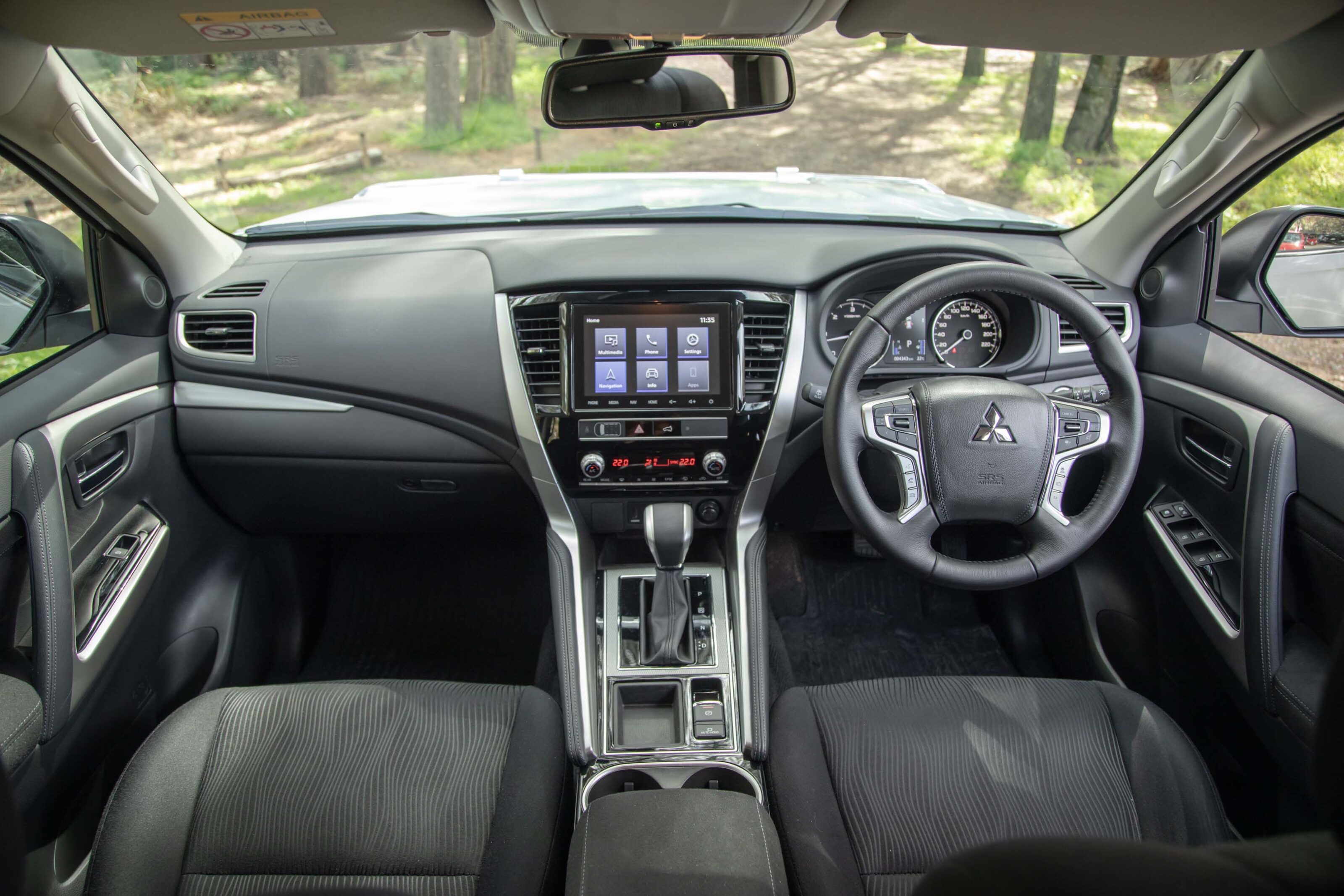
Comfort
The exercise of bolting in the kids’ car seats did reveal that the vehicle’s tether points are in the roof of the car, as there are no anchor points on the seat backs like in other vehicles. The ISOFIX rails also protruded a little from the seat base, which did make me wonder if they’d present some discomfort to rear passengers who didn’t need a child seat.
I sat on the rear pew for a few minutes only to realise that my understanding of the human shape wasn’t all that advanced, and the protruding ISOFIX points didn’t poke into the posterior.
The seats themselves are wrapped in soft-touch material, rather than the typical hard-wearing cloth usually found at this end of the market. Sitting in them for longer periods was comfortable and the armrests on either side of the driver were well-cushioned.
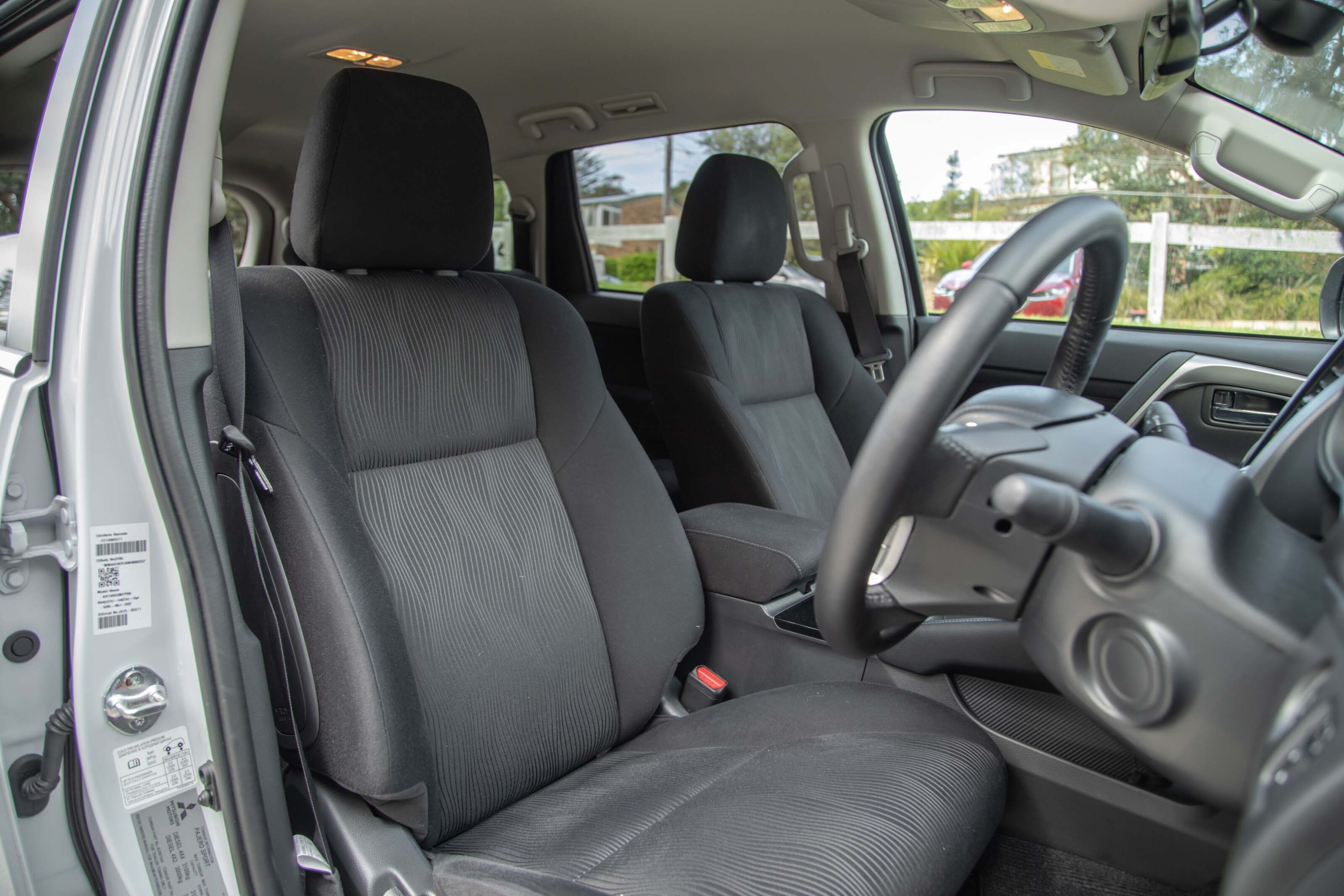
I was initially worried that our youngest might have some difficulty climbing up and into his seat, but he tackled the task with great enthusiasm, even if it left footprints in the strangest places. His dismounting process was somewhat similar to a five-minute-old giraffe finding its feet, and he did need a little guidance and reassurance. By the end of the week, he was climbing in, out and around the car with his typical playground gusto.
Rear occupants had their temperature maintained with vents in the ceiling just above the doors, which my five and eight-year-olds delighted in adjusting back and forth.
Their joy was further elevated when they realised that they could control the fan speed themselves by using the buttons in the ceiling near the cabin light. Cue the orchestra of fan noises as the pair explored their wondrous, but limited, control over the car’s ambience.
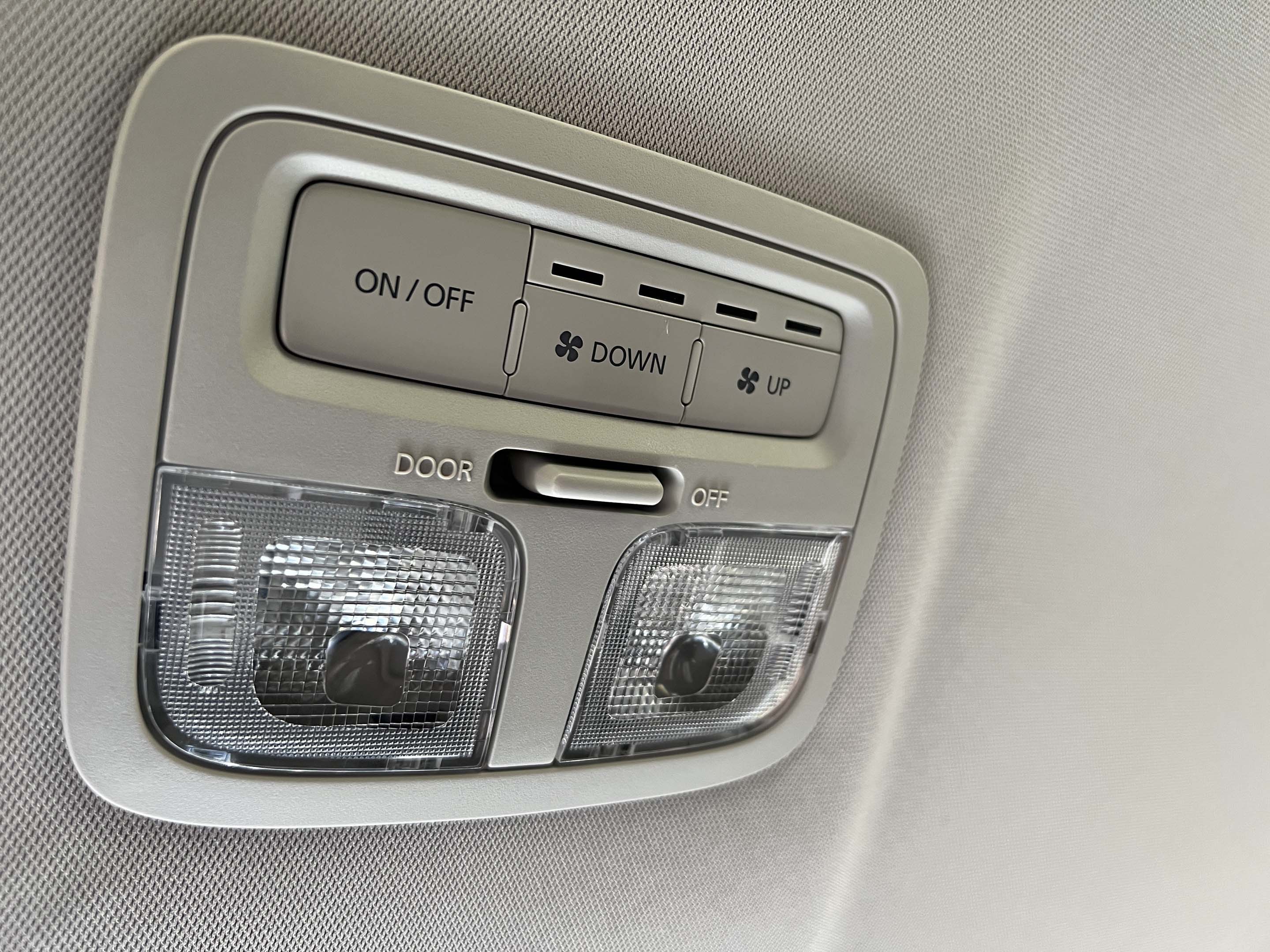
The rear centre armrest had pop-out cup holders that were good for the cans of drinks you regret ever handing your children (the photo is for illustrative purposes only and not a sign of my feeding such liquids to them), although the door bins weren’t able to house a water bottle with a 75mm diameter.
Boot space is generous at 502 litres, allowing for various errands to be run for family members, such as carting a small indoor air-conditioning unit for my mother-in-law, and taking some bottles to the recycling centre for South Australia’s 10-cent deposit.
It’s not the best metric for measurement, but the Pajero Sport was easily able to carry enough gear for a brief trip to the beach, my laptop, and $19.50 worth of uncrushed recycling.
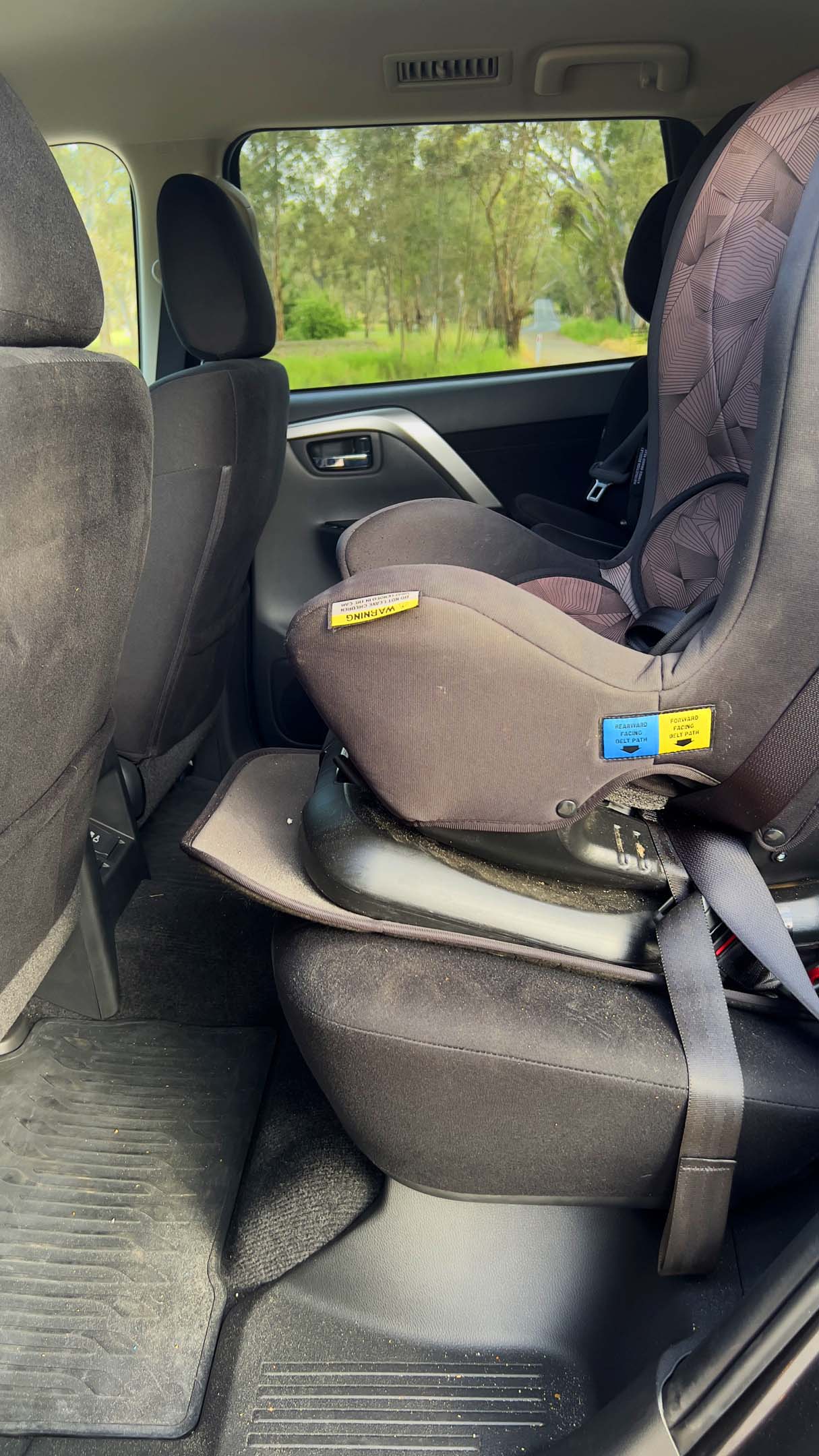
A misjudgement of a turn and my understanding of the air-conditioner’s centre of gravity did result in the aircon unit falling over, but the boot lining proved durable and showed no signs of damage. Phew.
Litres are one thing, but boot dimensions are another. The below table shows the size of the boot, and figures were obtained from Mitsubishi’s Pajero Sport brochure – apart from dimensions with the third row down, which I measured myself.
Pajero Sport GLS 4×2 boot dimensions
| Boot length with all seats up (mm) | 393 |
|---|---|
| Boot length with third row down (mm) | 1020 |
| Boot length with all seats down (mm) | 1575 |
| Cargo space width (mm) | 1370 |
| Cargo space height (mm) | 885 |
| Width between wheelarches (mm) | 1000 |
| Litres (third row down) | 502 |
| Litres (all rows upright) | 163 |
| Litres (all rows folded, measured to roof) | 1488 |
Until this Pajero Sport, I had never observed a boot lip that is lower than the boot floor – everything else I’ve seen is either flush or has a lip that items need lifting over. This design seems likely to send things rolling onto the street if you park with the nose pointing uphill.
The third-row seating provided by the Pajero Sport’s 5+2 arrangement was only ever used once as a novelty for the kids. It isn’t a place for an adult to spend any great period of time.
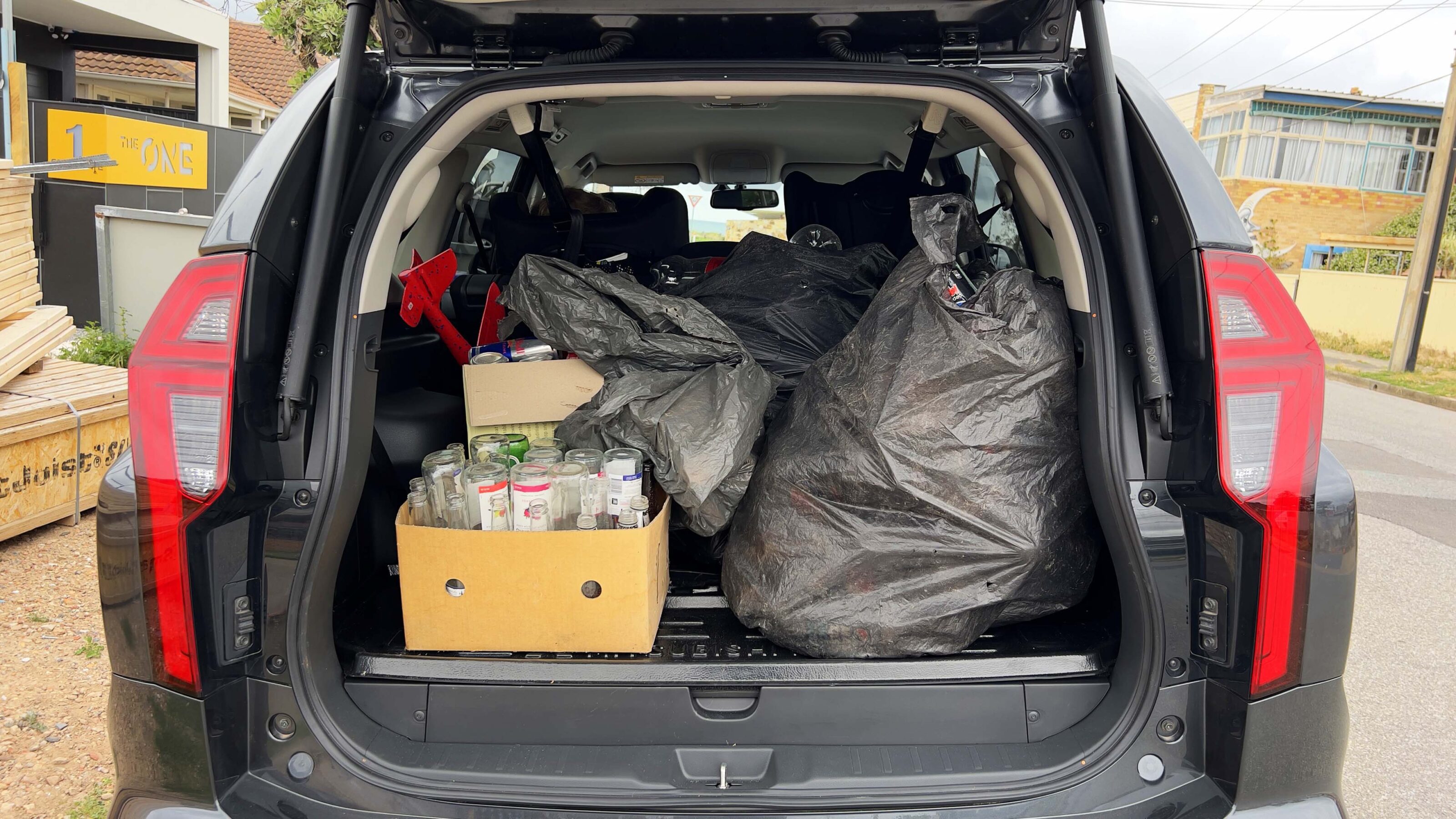
Technology
In comparison to the Mitsubishi Outlander previously driven, the cabin felt a little dated, but I feel that is the nature of the Triton base on which this Pajero Sport is built. The infotainment screen is decent in operation, responsiveness and resolution, but is smaller than some more modern offerings.
Apple CarPlay is of the wired variety, and it did take a few extra moments to boot after starting the car.
Speaker quality is acceptable, and while that could be considered damning with faint praise, I found that my 90’s alternative music was just able to overcome the gravelly Tom Waits-esque tones that seemed to be coming from behind the firewall.

When searching for the usual USB points to help with the kids’ entertainment for long trips I was surprised to find a full-sized 220V AC power outlet between the front seats. A real boon for campers, I would imagine.
The push-button tailgate was a welcome addition for someone who still yanks their boot door closed with a grab handle. Only on one instance did the car seem to detect an obstruction and refused to close properly – but that was a one-off instance and not something that would make me condemn the technology completely.
Adaptive cruise control was welcome for a few highway trips, although a strange beep from the dash would occur every now and then. I eventually pinpointed the noise to when the system stopped detecting a car in front while the cruise control was activated.
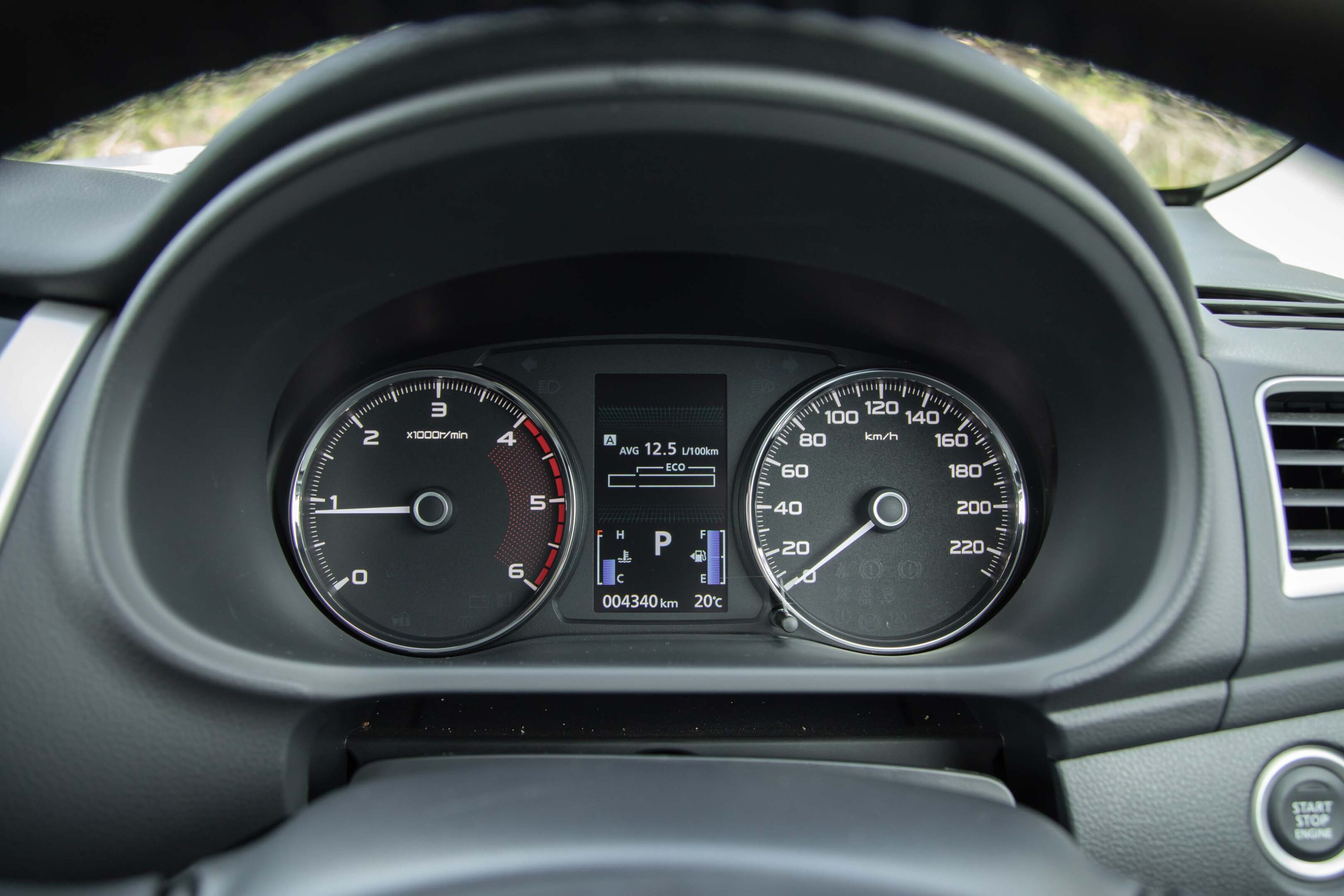
On the road
I had initially made an incorrect turn as I was leaving the Pajero Sport’s collection point in Adelaide. The city’s relatively new Torrens-to-Torrens project had deceived my usually reliable understanding of Adelaide’s trusty grid of suburban streets and led me to a dead end.
Previous Mitsubishis I’ve driven have had a turning circle that left me feeling like a Titanic officer in the Crow’s Nest, achingly waiting for the vehicle to change course as it turned hard to starboard.
When turning around from this dead end I was pleasantly surprised by the Pajero Sport’s 11-metre turning circle, the car making a simple U-turn without fuss or scraping kerbs. The width of the street was rather generous in this older Adelaide suburb, I concede, but I was still pleased with the result.
Take-off required a heavier foot than I’d anticipated, with first and second gears being quite short – likely helping with towing, as sudden and lurching acceleration would be rather troublesome with a fully laden trailer. A short period of acclimatisation had this non-issue sorted.
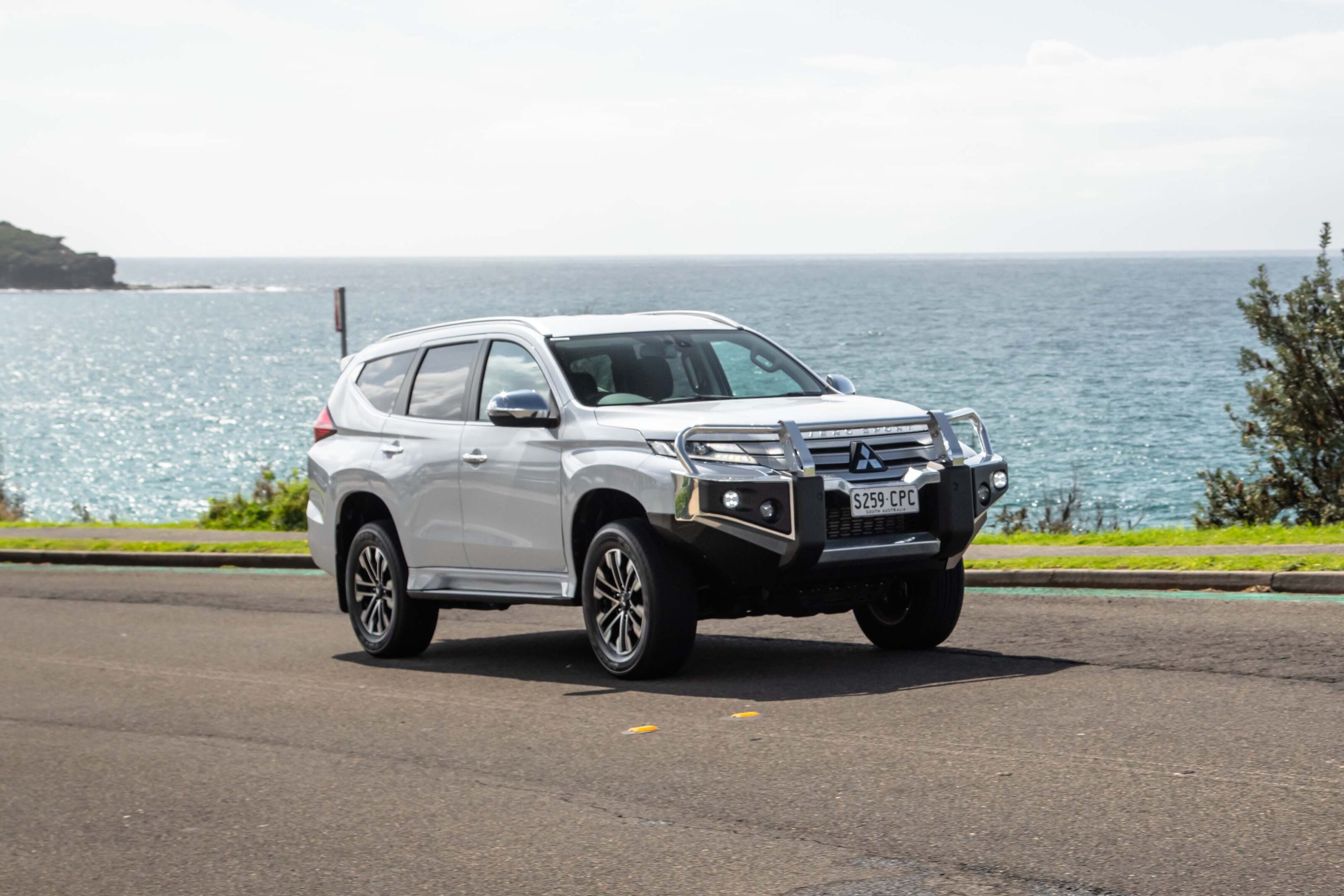
Hitting bumps at speed did upset the car, causing some jittering in the ride, but I understand that this is likely the price to pay for having a 730kg payload and 3000kg towing capacity. Load the Pajero Sport up with more weight or put something significant on the tow hitch and the ride should settle down.
Without a spare boat or caravan to tow, I decided to use a fairly rudimentary test that I’ve done on every car I’ve owned. There’s a road in the Adelaide Hills named Checker Hill Road; a very brief stretch of road that has a steep ascent that strangely gets progressively steeper the higher you climb.
Every car from a KC Ford Laser to the family Tiguan has performed this drive, with the latter doing it effortlessly, and the former needing me to drop the manual all the way down into first gear to finally claw over the top.
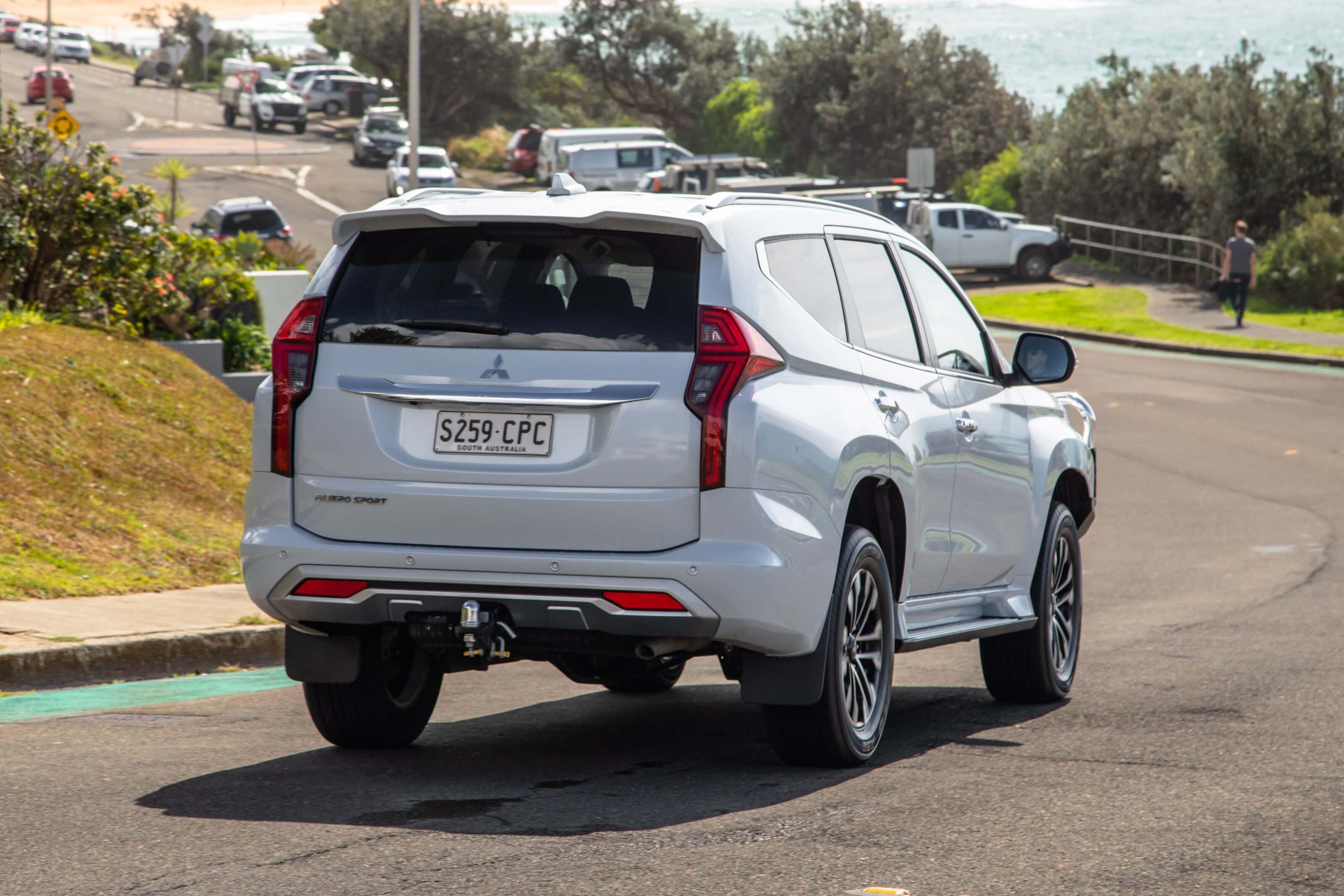
Right before the climb, the road does this neat little left-right-left, with the double line in the road totally and completely preventing literally every driver from ever cutting the corner as they totally and completely obey the posted 80km/h speed limit for the run-up the hill.
The Pajero Sport easily climbed the hill, the 2.4-litre diesel serving up its 133kW and 430Nm of torque to dispatch the ascent without any kick down through the gears or any hunting between the eight ratios available.
In fact, even during regular country road driving the transmission never did anything unexpected or indecisive with gear selection.
The following stretch of road after the climb is an up-down-up vomit comet of a road that is a horrid patchwork of various grades of tarmac.
Its many divots and pocks did cause the transfer of thuds into the cabin, the R18/60/265 Toyo tyres not cushioning very much and causing the Mitsubishi to shimmy a little in protest. However, that sensation never felt disconcerting or troublesome, with the vehicle communicating through the steering wheel and the ride.
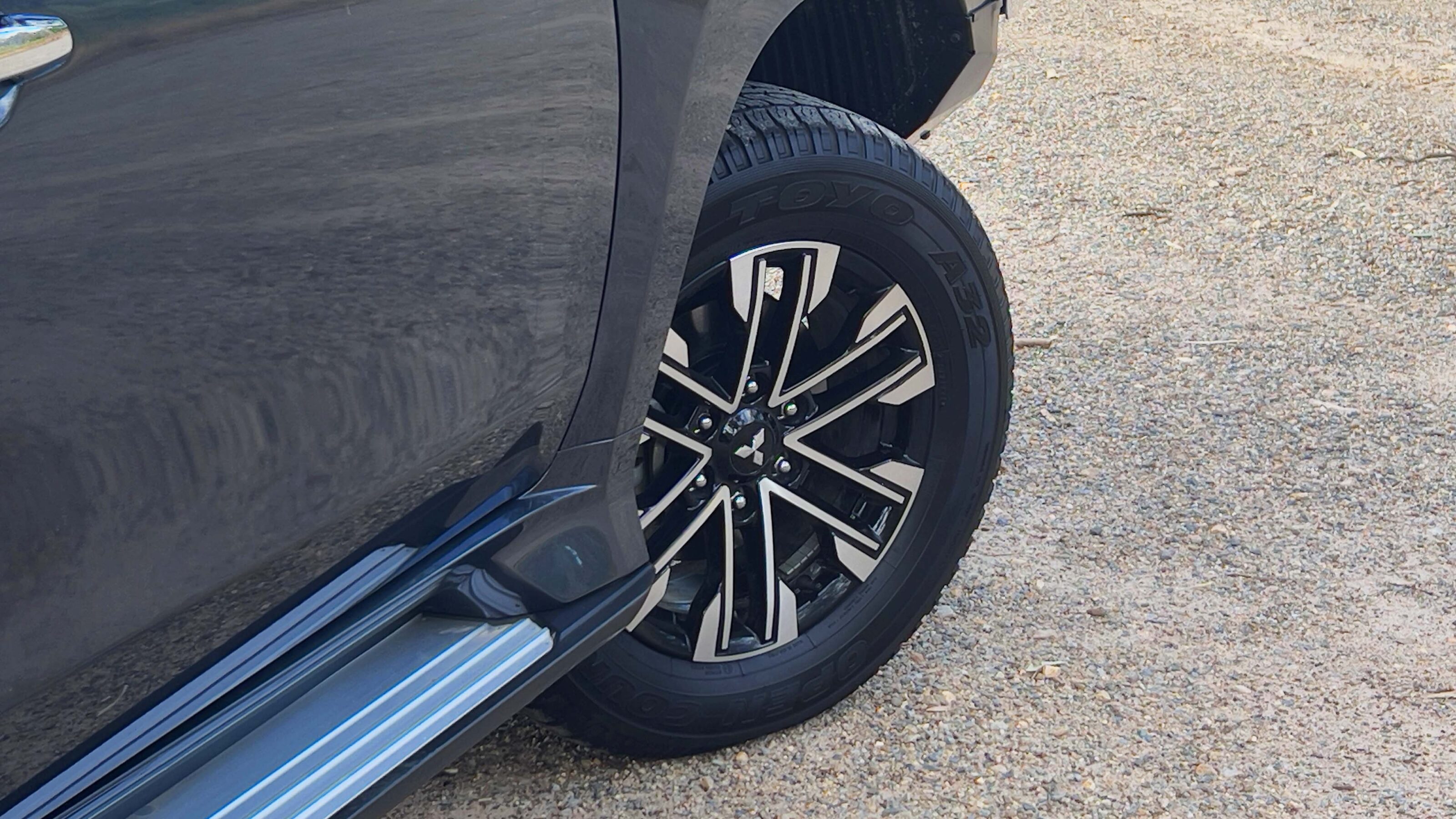
Safety
Front and side airbags feature on this GLS model, along with curtain and driver’s knee airbags. Trailer stability and traction control are standard across the entire range, which should be reassuring to those who plan on towing.
Adaptive cruise control was smooth with its detection of other vehicles, adjusting its speed with grace. I’ve experienced similar systems acting surprised to see a car in front, jerkily making speed adjustments. I would have liked a digital speedometer to easily gauge when the system was taking effect, but that’s a minor quibble.
Back in 2015 ANCAP rated the Pajero Sport with five stars, with an overall score of 36.22 out of 37. It might struggle to do the same with today’s tougher criteria.

Fuel economy
Our Pajero Sport’s Fuel gauge didn’t seem to move for the first few days but then plunged harshly. At the end of my time with the car, the trip computer read 9.0 litres per 100 kilometres, which is a little higher than the official 8.0L/100km combined cycle figure.
There were several highway trips during the week, although the bulk of duties were within the city limits and carrying other occupants for their school and kindergarten runs.
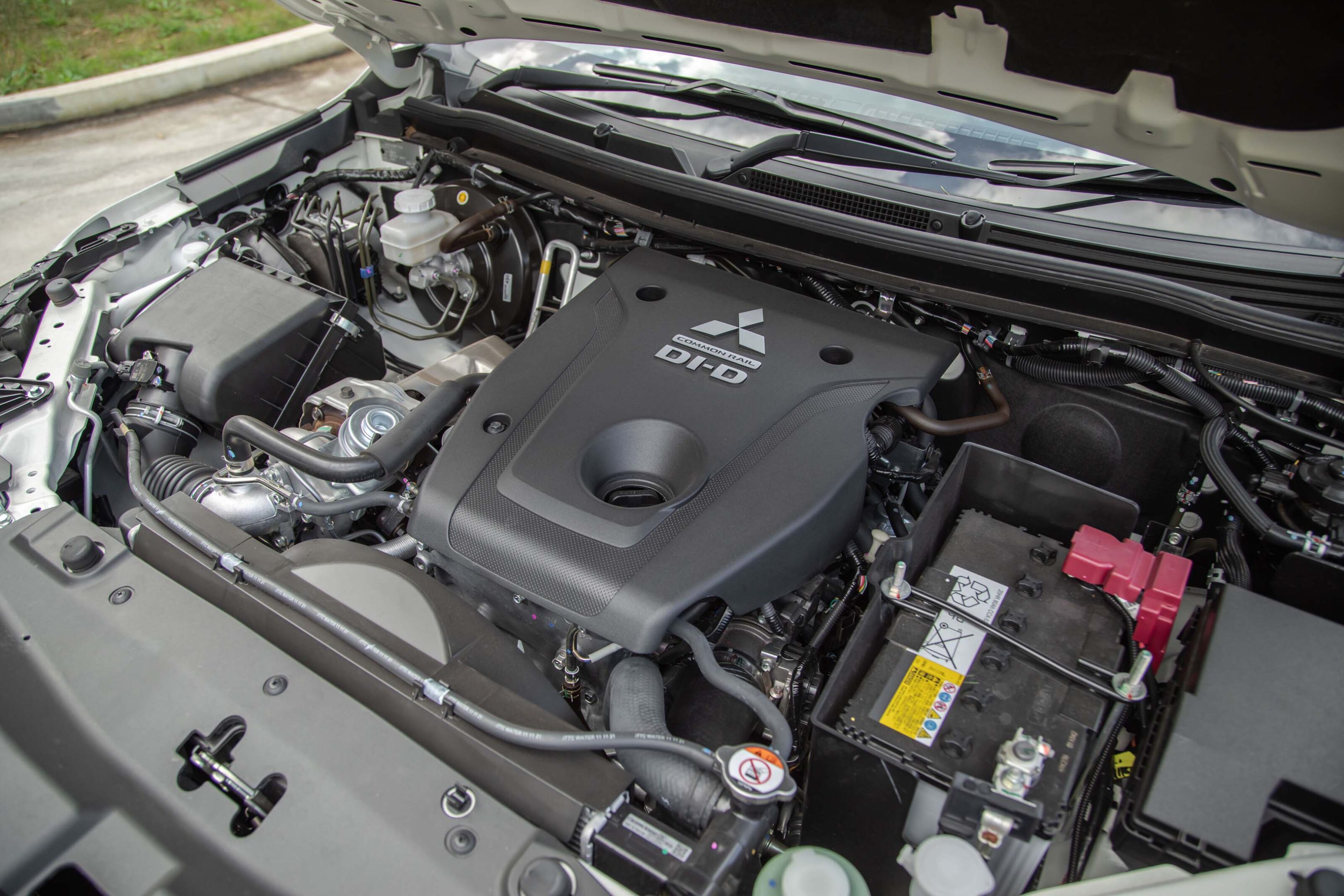
Parking
Outward visibility was good despite the Pajero Sport’s bulky A-pillars. Even without front parking sensors, big mirrors and the rearview camera made it easy to place the vehicle in shopping centre car parks – although I personally made a point of reversing into parking bays.
The perch inside the car felt somewhat elevated, rather than being an “in-the-car” sensation, but the perk of this was the easy ability to pick the corners of the front of the car which helped to manoeuvre around the Black Friday madness that was occurring at the time.
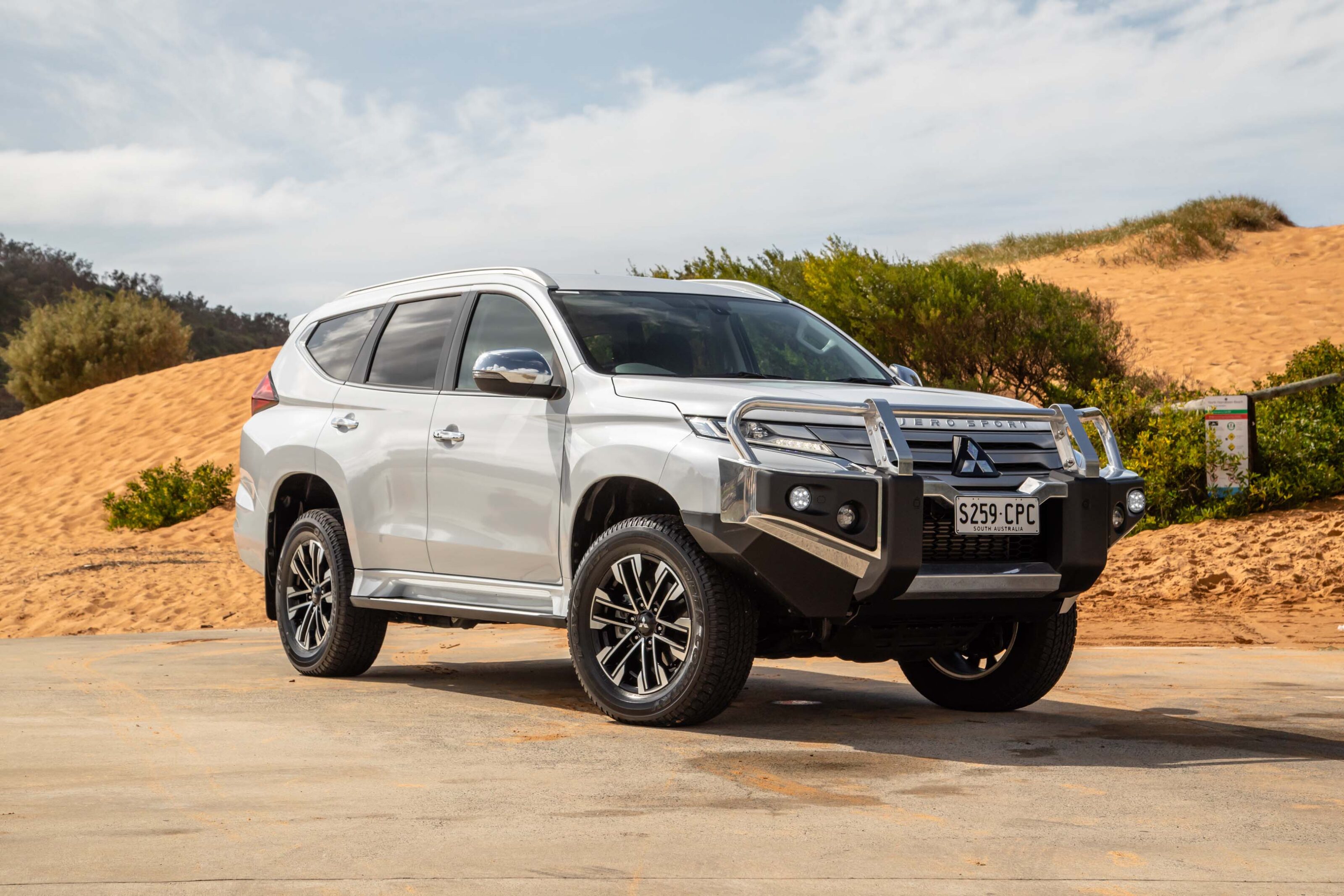
Last impressions
This Pajero Sport proved very handy in its week with our family. The boot space and dimensions allowed for a lot of transportation of various items that could have been a little cumbersome in the Tiguan.
When hauling gear around, the Pajero Sport performed every task asked of it and did it in a way that was fuss-free and comfortable.
It did become obvious over the week with the Pajero Sport that it would be ideal for those who want something that amply does the usual family duties, but always has that option to take that rugged getaway when the call of the wild becomes too great to ignore – so long as you remember this is the two-wheel drive version.
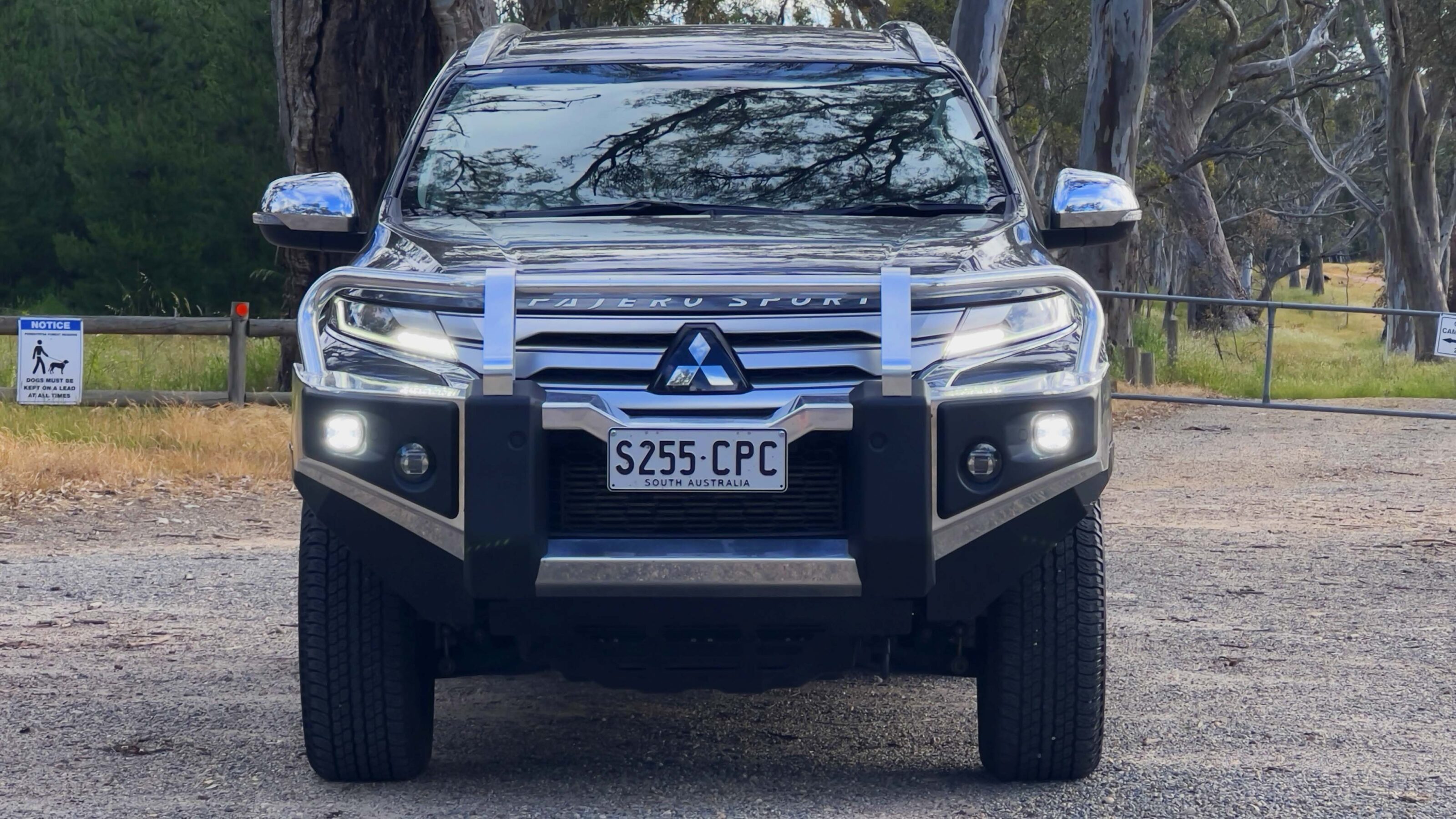
The 730kg payload is only 10kg greater than the other SUV in the Mitsubishi line-up, the Outlander, but that car’s 1600kg towing rating is dwarfed by the Pajero Sport’s 3000kg – 3100kg on the 4×4 variants.
Its braked towing capacity should be appealing for those who need to take the caravan or boat away for that adventurous weekend but don’t need the extra fuel cost of four-wheel drive.
As someone who never saw the appeal of these larger cars for regular everyday use, I feel I can say that I get it now; the commanding view of the road, the excellent outward visibility and the sheer torque from that diesel engine. It all combines to make a very appealing package, especially for those who need that extra ability to haul.
2022 Mitsubishi Pajero Sport GLS 4×2 7-seater specifications
| Price | $52,240 + on-road costs |
|---|---|
| Transmission | 8-speed automatic |
| Drive | rear-wheel |
| Power | 133W @ 3500rpm |
| Torque | 430Nm @ 2500rpm |
| Fuel type | diesel |
| Combined fuel consumption | 8L/100km (claimed) |
| Seats | 5+2 |
| Doors | 5 |
| Wheelbase | 2800mm |
| Overall width | 1815mm |
| Overall length | 4825mm |
| Ground clearance | 218mm |
| Weight | 1980kg |
| Country of assembly | Thailand |
Things we like
- Good internal occupant space
- Easy parking despite the size
- Smart spacing of transmission ratios
Not so much
- That engine noise
- Ride can feel finicky, especially at speed
- Cabin feels dated
We recommend
-
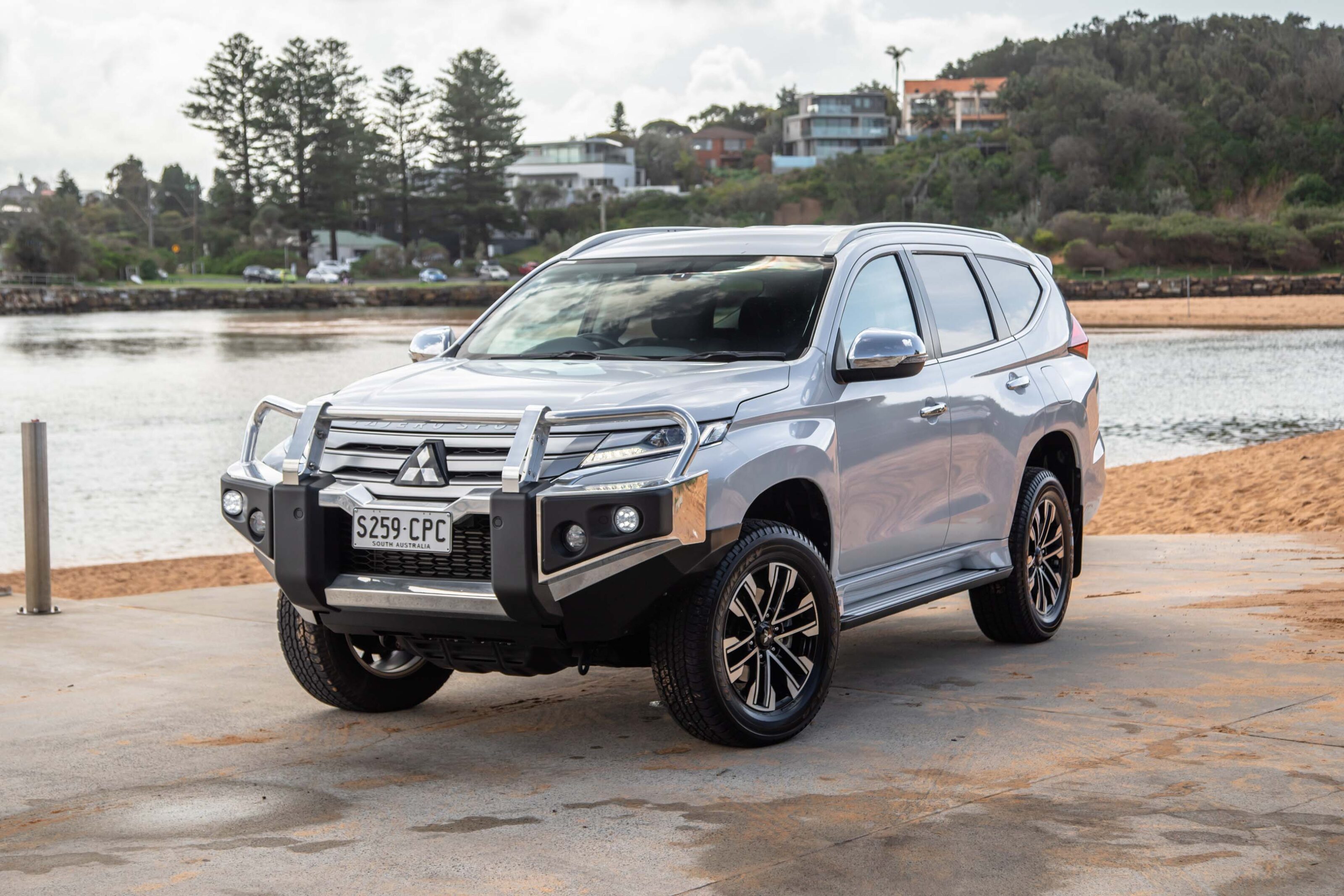 Reviews
Reviews2023 Mitsubishi Pajero Sport review: 7-seat GLS 4x2
Do you really need four-wheel drive on your rugged separate-chassis SUV? We try a Mitsubishi Pajero Sport in 4x2 flavour to find out.
-
 News
News2025 New Car Calendar: All the new cars coming to Australia
Take a look at our list of what is expected to launch in Australia in 2025 – plus those we might not see locally just yet



